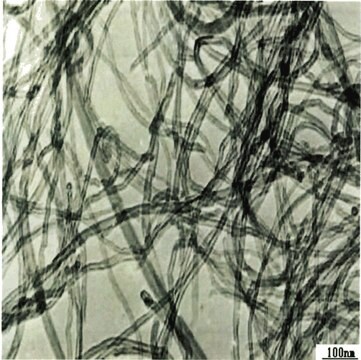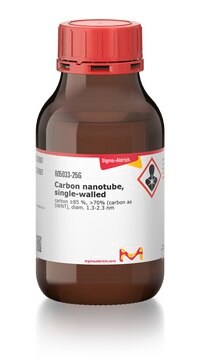773840
Carbon nanotube, multi-walled
≥98% carbon basis, O.D. × I.D. × L 10 nm ± 1 nm × 4.5 nm ± 0.5 nm × 3-~6 μm, TEM, avg. no. of layers, 6 ‑ 8
Sinónimos:
SMW200, MWCNT, MWNT, Multiwall carbon nanotube
About This Item
Productos recomendados
assay
≥98% carbon basis
form
powder
feature
avg. no. of layers 6 ‑ 8
O.D. × I.D. × L
10 nm ± 1 nm × 4.5 nm ± 0.5 nm × 3-~6 μm, TEM
surface area
280-350 m2/g , BET
mp
3652-3697 °C (lit.)
density
~2.1 g/mL at 25 °C (lit.)
bulk density
0.068 g/cm3
¿Está buscando productos similares? Visita Guía de comparación de productos
General description
Application
Physical properties
Preparation Note
Legal Information
SWeNT is a registered trademark of Southwest NanoTechnologies;Inc.
Storage Class
11 - Combustible Solids
wgk_germany
WGK 3
flash_point_f
Not applicable
flash_point_c
Not applicable
Elija entre una de las versiones más recientes:
¿Ya tiene este producto?
Encuentre la documentación para los productos que ha comprado recientemente en la Biblioteca de documentos.
Los clientes también vieron
Artículos
Improved multi-walled carbon nanotubes (MWNTs) have been recently developed by CoMoCAT® technique and adopted in a significant number of applications, including batteries, water filter membranes, and electric or thermal conducting polymer composites.
Nuestro equipo de científicos tiene experiencia en todas las áreas de investigación: Ciencias de la vida, Ciencia de los materiales, Síntesis química, Cromatografía, Analítica y muchas otras.
Póngase en contacto con el Servicio técnico





